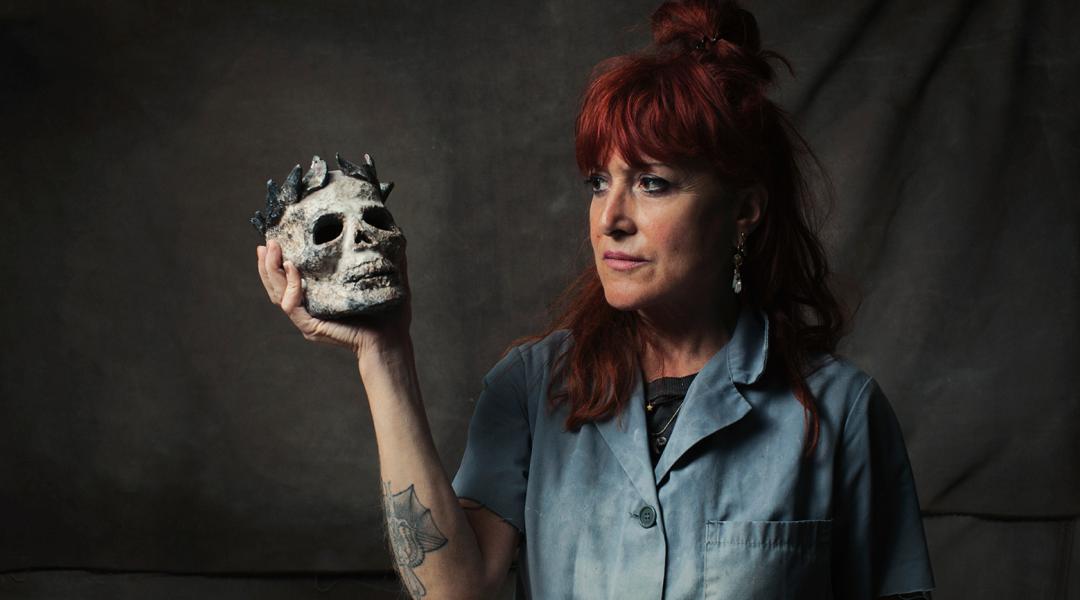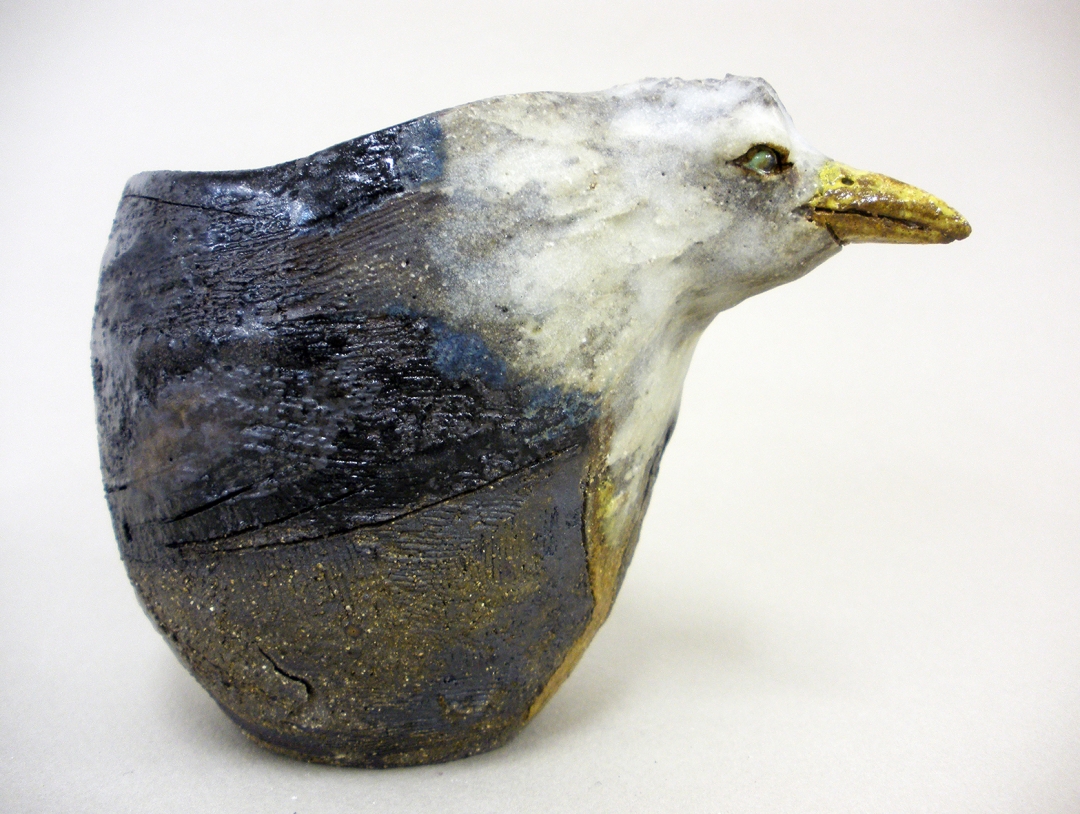Eva Hernández
“There Is Nothing Like Working With Your Hands To Know What You Are Capable Of”

It is no surprise that, in recent years, Eva Hernández’s ceramic pieces have found their way to the best design and interior decoration boutiques, both in and out of Spain. Handmade without moulds like yesteryear, and painted by hand using her own formulas, her timeless designs are destined to last.
The 'Wunderkammer', also known as cabinets of curiosities or wonder-rooms, were conceived as places meant to encapsulate the world in a kind of microcosm. Eva Hernández’s workshop, in the Madrid neighbourhood of Pueblo Nuevo, is quite similar to those spaces, which proliferated during the last century. Animal books, magazines and zoology essays share the space with laminas of pre-Raphaelite works, piles of scrawled notebooks and art catalogs—the surreal world of Hieronymus Bosch is one of her great inspirations. But, most of all, it is the place where this potter from Vigo gives free rein to her inner world, transforming it into unique, beautiful pieces made with great sensitivity. From plates and bowls to zoomorphic cups—“ideal for tea,” she says—to bespoke portrait sculptures, fake hunting trophies, and even cheerful funerary urns, contradictory as that may sound. A story of intuition, reinvention and perseverance.
You have an unusual career. You worked as a graphic designer and web developer just before studying pottery and forever ditching the mouse in favour of clay. That was in 2011. How did you come to such a drastic decision?
When the financial crisis was at its worst, some great changes were happening in my life, both on a personal and a professional level. A friend told me about this ceramics school and I enrolled, thinking that it would serve as therapy. Little did I know that it would lead me to completely immerse myself in my artistic side again. I realised that I had been wrong all this time and that I should return to art as I had always conceived it, as something artisanal.
Entrepreneurship usually comes with a feeling of vertigo. Was that the case for you?
At the end of the day, life’s what you make it, and there is nothing like art and working with your hands to realise what you are capable of. In my workshop, I find myself alone before ceramics and my creative possibilities. Every day is a challenge.
Over the past few years we have witnessed a strong return to the art of ceramics, with projects that, like yours, are committed to artisanal and traditional ways of working. Where do you think this interest in our grandparents’ trades comes from?
I think it’s a clear sign that something isn’t working. We’ve invented the need to be constantly connected with technology, and many have realised that it’s all a farce. The meaning of life is elsewhere; in working with your hands, in developing your imagination. It’s the alternative to what they’re trying to sell us. It’s only natural that, today more than ever, so many urbanites decide to move to the countryside or near the sea and embrace more primitive values. In the cities we have ever fewer trees left.
Each of your pieces has a timeless quality, and they fit effortlessly into both classical and contemporary contexts. Is that deliberate?
I like classic styles and soak up references of any era. I find it hard to identify what’s really modern, whether in art or fashion. I imagine that having grown up in a family of artists [her father was an enamelist; her mother is a painter; her brother a musician; and her grandfather a goldsmith] has something to do with it. A crazy family! I wanted to get out, but in the end I caved. (Laughs)
Galicia is known, among other things, for being a land of potters and a cradle of other artisans such as clog, basket or knife makers. What is it about your home region?
I suppose it’s something to do with the weather—people spend more time at home—and our geographical situation. It’s quite hard work to even get to Galicia! The proximity to Portugal has also been key in the Galician craft culture. Being from the Rías Baixas, I’ve always felt a special bond with the Portuguese people, and that’s reflected on many levels.
What is you creation process? How much of it is improvisation?
I usually start drawing—I’m a sucker for pads! In my pottery I always say that there’s three of us working: clay, fire, and me. I let the clay take its shapes; sometimes, the piece bends, or bumps form on the surface, and from then on it’s as if the material itself speaks to me: I see possible animal faces, or particular motifs. And, lastly, the fire, which always has the final word, does its work. After that, the piece may come out as expected, or something different but interesting may emerge, or it could be something that goes straight to the trash. Everything has its influence on the piece, from a colour that pollutes the air inside the oven to a possible excess of oxygen. Not knowing what the thing I started will look like in the end generates a kind of addiction.
I understand that you work without moulds.
Indeed. A mould allows you to produce larger runs and have more accurate results, but I prefer that no dish be identical to another. That’s why all my pieces are unique. If someone wants two of the same dishes, they’re not going to be by Eva Hernández! (Laughs)
Is inspiration born or made? In other words, does it come to you or do you look for it?
Inspiration, like everything else, is something you work on. I don’t believe in the whole “I’m going for a walk to get inspired” thing. Work and perseverance are fundamental, and they have been throughout my life.
Your work includes all kinds of kitchen utensils such as plates, bowls, dishes, and cups. Is there a direct link between your pieces and gastronomy?
They say potters are great cooks. Not me. I can lovingly open a can, and that’s it. Of course, even if it’s a precooked meal, I like to eat from a good plate. For me, texture is essential. I use chopsticks because I love wood, I prefer my spoons porcelain. It’s almost luxury, a factor that changes the flavour. It’s like when you serve a beer in a glass or in a plastic cup. Totally different things!
What dish would you serve in one of your sets?
A good salad. I love to discover the different animal drawings among the vegetables. Finding a beetle all of a sudden, or a little bird.
It may sound macabre at first, but you’re a great champion of the funerary urn as an emotional and decorative object. Do tell.
In our family house we had a whole animal “cemetery” on the roof. We had hundreds of them; collected, found. And when they died, we would pour their ashes in pots and other containers so as not to spread them around. All my life I’ve lived with these objects. I never understood the throwing the ashes from a cliff thing. Funerary art remains stuck in religious references, but it’s a market that must change. You can do such wonderful things. I’m already thinking how mine will be...
When we visualise your pieces together—all of them full of illustrations of insects, birds or fish—one gets the impression of being in front of a kind of medieval animal lab. So much so that it’s almost impossible to find a piece signed by Eva Hernández that doesn’t feature some animal species. Where does this obsession come from?
It’s a lifestyle. I dare to say that I’m more interested in animals than in humans. They’re all wonderful. For example, I love insects—they’re like little coloured jewels. That’s why, in my studio, I try to be surrounded by them, whether in books, sculptures, ceramics, or drawings. That’s when I feel happiest.
What’s the last animal you’ve discovered?
The blobfish. It’s an animal with an absolutely amazing manlike face—I urge you all to google it.

Another of the pieces of the ceramist Eva Hernandez, also based on the animal world. © Kela Coto





